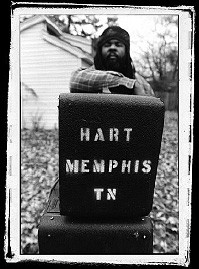South Korean director Bong Joon-ho’s The Host (already that national cinema’s all-time box-office champ) emerged at the Cannes Film Festival last year and has recently been making its way through U.S. theaters. As it does so, it provides a much-needed counterpoint to the recent spate of low-budget Hollywood horror flicks that have cluttered multiplexes in recent years. Rather than mixing gratuitous gore with deafening pop songs, here’s an imaginative creature-feature that mixes chills and thrills with comedy, social commentary, and bright blasts of cartoonish pop energy.
Slimy, silly, and often downright anarchic, this tale of a mutated sea monster that emerges from the Han River to terrorize Seoul is like a Mad magazine version of a horror movie, but it’s not quite a spoof. Instead, Bong commits to all his shifting tones. The slapstick, family warmth, raw fear, and barely submerged geopolitical critique are all equally embraced.
The Host opens in the year 2000 in the morgue of a U.S. Army base in South Korea as an American officer orders his Korean underling to dump gallons of toxic chemicals down the drain and, ultimately, into the Han River. Seven years later, the result is a giant mutated sea creature — a heaving monster tadpole with teeth and legs — spotted hanging like a possum from the Han River Bridge.
When the creature drops into the water, people rush to the banks of the river and, like children at the zoo, toss fast food and other debris into the water to “feed” the beast, which instead decides there are better dining options on land. This is the comic-horror high point of the movie, as the creature gallops clumsily through the city park in broad daylight, chomping at fleeing onlookers.
This sudden attack draws the film’s human protagonists — the riverside squid-shack-operating Park clan — into the mix. There’s an aging patriarch, suffering the indignity of his two deadbeat sons — one lazy, the other a bitter alcoholic. A daughter is an Olympic archer whose delayed release keeps her from greatness. The little miss sunshine of this dysfunctional family is the grade-schooler Hyun-seo, daughter of the lazy son.
Hyun-seo and her dad end up in the middle of the creature’s attack, with Hyun-seo abducted after her father grabs the wrong schoolgirl in the middle of a mob scene.
With Hyun-seo thought dead, the family goes into mourning, only to have her reappear via a cell-phone call from a sewer dungeon. With a mission to save their youngest family member, the Park clan breaks out of quarantine (the U.S. Army and South Korean government claim the creature hosts a deadly virus) and heads back to the Han to hunt for Hyun-seo. (And, really, how much better would Little Miss Sunshine have been if the family had had to combat a giant killer tadpole?)
As the Park clan embarks on this dangerous adventure, the authorities seem more concerned with tracking them than capturing or killing the monster itself. With the U.S. Army set to unleash an “Agent Yellow” chemical to stop a virus that may not exist and combat a threat of its own making, The Host is one long eyeball roll at American hubris and its impact on the Second World nations that “host” it. In this way, The Host is nothing if not an update of the most evocative Cold War monster movies. It’s worthy of the company.
The Host
Opening Friday, March 30th
Studio on the Square
